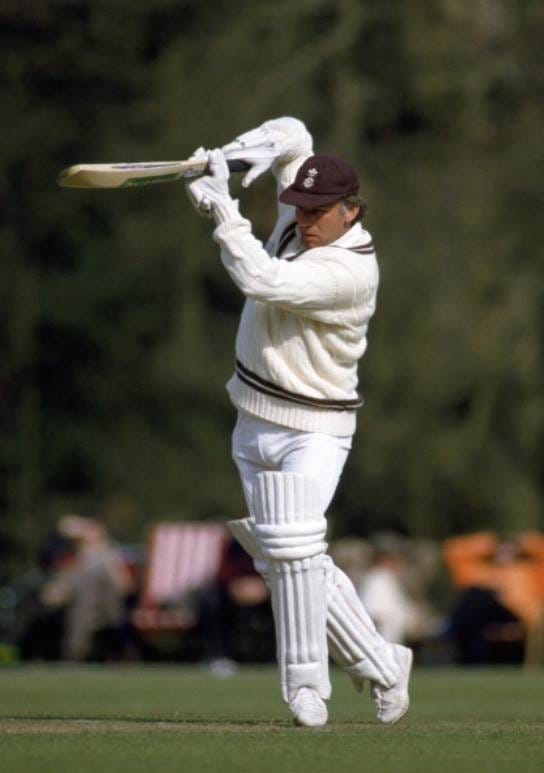Visualization: A Key To Unlock Performance
How Alan Butcher used visualization to help a player.
Alan Butcher shares a memory of the time when he used visualization to unlock a young cricketer’s ability.
It must have been 1997 or it could have been 1996. Possibly 1998. Alan Butcher is not too sure, a few years have passed and there is less certainty on the exact dates. Sometimes he can be bad with dates like that. So we settle on 1997. There is something that tells him that it is most likely 1997 than it is any other year.
So, in 1997, when Alan Butcher was coaching at Essex, there was this young man who lived in Hertfordshire. He was around 16 and played in the Essex youth squad. The kid had a decent left-arm and had a bit of pace, but his handicap was that he just couldn't swing the ball. Whenever he bowled, he pushed the ball out the hand, and it came out down the wrong side.
“We tried everything to help him swing the ball,” says Alan. “Geoff Arnold was helping with the bowling and he was trying everything technically, but we couldn't get his action into the right shape to swing the ball back into the right-handed batsmen.”
Desperate and out of ideas, as a sort of last roll of the dice, Alan Butcher decided to try something he had learned from his interactions with John Syer, visualization.
Alan had met John Syer in 1987, when he signed with Glamorgan. Syer is a sports psychologist and founder of Sporting Bodymind, an innovative sports psychology consultancy. At the time, Butcher was struggling with his game. The thing was, Butcher had the ability, yet, somehow just failed to execute. Everyone involved agreed that it had more to do with his mindset.
“The consensus was that although I was confident in my ability,” says Alan, “I needed to acquire a touch more arrogance or at least an outward display of it.”
Even though he was inwardly confident about his abilities, Syer felt that Butcher needed to physically act it out. And when asked what that looked like to him, Alan Butcher referenced Franz Beckenbauer’s performance at the 1974 World Cup Final.
“He had a bad shoulder but played with his arm in a sling, head high, unhurriedly spraying passes and generally controlling the match,” to this day, Butcher is still in awe.
“Once I'd described this Jon used breathing relaxation techniques to take me through a visualization in which he asked to watch myself at a time when I felt I had this confidence or arrogance and I chose the 1982 NatWest Cup final.” Butcher shares. “He asked me to recreate the scene in my head, to run a video, to feel and smell the grass at Lords, to hear and see the crowd to remember every detail, and it felt so good.”
Visualizing the perfect innings, with himself playing with that arrogance, was a gamechanger for Butcher. It led to Butcher playing one of his most prolific seasons of his entire career that saw him crowned the 1991 Wisden Cricketer of the Year.
Swimming legend Michael Phelps used to visualize the perfect race as part of his preparation for races. He would visualize everything from the moment he jumped off the blocks, to the strokes he made as he swam, including the walls of the pool and the turns, then the finish.
Everyday after training, Phelps’ coach used to tell him, “When you get home, watch the videotape. Watch it before you go to sleep and when you wake up.” Even before races, Bob Bowman would tell Phelps, "Get the videotape ready."
According to Phelps visualization helped him. Proteas star Herschelle Gibbs cites visualization as an integral part of his pre-match routine during his playing days.
In the 80s and 90s, the time when Syer and Bowman were using visualization with athletes and teams, the practice was still in relative infancy as a tool to get the best out of sportspeople. It was not until years later that it got any academic attention too.
A 2016 study published in the Journal of Sports Science and Medicine found that visualization has been linked to better motivation, self-efficacy, self-confidence and as a tool to manage stress and anxiety. A number of athletes have reported that they felt more in control and prepared for unexpected events should they occur.
Billie Jean King, who also used to visualize during her time as a professional athlete said, "I used to think about everything that could go wrong and then try to picture myself, or how I would react to it or how I would respond to it. So I always thought about the wind; I thought about the sun; I thought about line calls; I thought about rain, if we had to wait, things that were probably out of my control, and how I would respond to them."
Visualization may also function as a coding system in the brain, helping with the development of a plan or “mental blueprint”. The symbolic learning theory explains how imagery strengthens one's mental blueprint, enabling the actions/movements to become more familiar or potentially automatic.
Anyway, as a last resort, Alan Butcher decided to try and see if he could use visualization to help this youngster.
“I asked him who his favorite bowler was,” says Alan, “and he said it was Malcolm Marshall.”
Using the same tools and processes that he had learnt from John Syer, Butcher got the young man into a space where he was relaxed, with no distractions, and asked him to imagine Malcolm Marshall going through his bowling process. The lad had to describe in detail what he saw. They went over those details a couple of times
“Now, I want you to imagine yourself as Malcolm Marshall,” Butcher told the player. “I want you to describe everything. What you're smelling, how it's feeling. What's the weather like, and then watch yourself as Malcolm Marshall running up to bowl Marshall's outswinger, which was a left arm inswinger.”
After a few sessions of visualization exercises, Butcher decided it was time for the bowler to give it a try.
“We went down the net and the first two balls, I kid you not, he made them swing back into the right-hander, one plumb, lbw and one went through the gate,” Butcher says with a beaming smile. “So, now I'm jumping up and down and I am punching the air, and I think, ‘Geez, that is powerful.’”
The skills that they had seemed unable to unlock with technical coaching alone seemed to have been unlocked by visualization. That was the missing piece to the puzzle.
According to researchers, through visualization, one is able to "rewire" new neural pathways within the brain. Where there are existing pathways, visualization helps in strengthening those pathways. This is because when we repeat a certain action, the neural networks in our brains develop a coating around them that makes them stronger. This coating or insulation is called myelin, the process is called myelination. Our actions become more fluid.


When you visualize or imagine an activity, you actually stimulate the same brain regions as you do when you physically perform that same action. They say the human brain cannot tell the difference between something that is imagined and an activity that is physically occurring. As a result, visualization also acts as a simulated practice.
This is the psycho-neuromuscular theory. It suggests that imagery strengthens the neural pathways for certain movements. This is because images produced in the brain transmit impulses to muscles for the execution of the imagined skill, although these impulses may be so minor that they do not actually produce movement, or the movement may be undetectable.
This reminded me of something that I once read about mirror neurons, but that is another topic which we will visit later.
“It was an amazing demonstration of how powerful visualization can be,” says Alan Butcher. “What we hadn’t been able to do by talking to him technically or in a technical sense, how you should align your body, how you get your wrist behind it, all of it, when he saw in his head, he could do it. It's weird, but it's powerful.”
Thank you to everyone who has shown their appreciation of my work and this newsletter. I am entirely freelance and have no intention of putting content behind a paywall. However, for me to be able to continue producing more content, I depend on your patronage. So, please do support my work on Patreon.
Alternatively you could Buy A Coffee.
Also, please encourage anyone whom you think may be interested in my work to subscribe.






